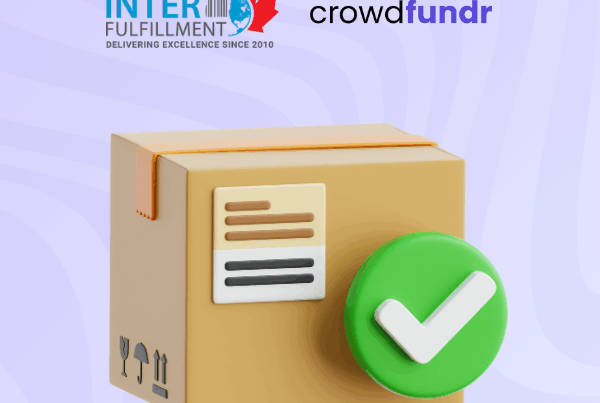Choosing a crowdfunding campaign funding goal is not arbitrary – thought and planning are crucial to ensure you cover the expected costs of putting your product in supporters’ hands PLUS the inevitable unexpected costs that might crop up.
Nobody will stop you from throwing an educated guess of a goal on your campaign. However, there are STRONG benefits to taking the time to plan your goal properly:
- Helps you deliver your promises within a respectable timeline
- Soften the blows from the unknown (pandemic, anybody?)
- Ensures product quality (over budget = needing cheaper materials, etc.)
- Hopefully, it leaves some profit!
We’ll cover the five key elements of a crowdfunding goal, and then, at the bottom of this page, you’ll find a workbook for determining your own goal!
As with our other toolkits, not every component applies to every creator. The point of a “Goal Toolkit” is to prompt our users to think about all aspects of crowdfunding for their project so they may budget accordingly. That may mean you utilize only some of the content here – and that’s okay! If you have questions about or suggestions for this toolkit, email us at support@crowdfundr.com.
Crowdfunding Campaign Funding Goal
KEY ELEMENT #1 – PRODUCT
The first step is to look at the costs associated with your physical product (and ‘physical’ can mean digital product, too. The idea is to focus on the reward items, outside of other costs).
Consider your product’s life cycle and determine your costs of the physical creation from concept to consumer-ready.
- Concept: Materials, tools, consulting, your time
- Creation: Materials, production, editing/QA
- Consumer-ready: Printing or manufacturing
Let’s look at a comic book example:
- Concept (Working issue): Paper, pens/pencils/brushes, ink/paint
- Creation (First issue): Editing fees, illustrator fees
- Consumer-ready: Printing*
*There are likely to be per-unit costs here, which change depending on the minimum amount to print, paper type, size, etc.
Our example: Comic book
| Variable | Fixed Cost | PPU |
|---|---|---|
| Paper | $5 | n/a |
| Pens/Pencils/Brushes | $25 | n/a |
| Ink/Paint | $50 | n/a |
| Editing fees | $1000 | n/a |
| Illustrator fees | $2000 | n/a |
| Colourist fees | $2000 | n/a |
| Printing (500 copies) | n/a | $2 |
| TOTAL | $5080 | $1000 |
Crowdfunding Campaign Funding Goal
KEY ELEMENT #2 – OPERATIONS
Operations refer to the work needed to foster relationships with supporters and get your creation into their hands. Again, we are looking at the entire scope of the project, from creation through crowdfunding and the follow-up with your supporters afterward.
Consider what tasks need to be accomplished in these areas:
- Creation: Salaries, workplace rentals
- Communication: Website design and maintenance, landlines/business phones, app & third party fees
- Crowdfunding: Payment processing fees, platform fees*
- Customer care: Salaries or virtual assistant / third-party fees
*Let’s break here and discuss fees.
Payment processing fees come from Stripe and PayPal. When you connect your account, you apply their rates. Fees are deducted from each transaction and sent to Stripe or PayPal (Crowdfundr doesn’t receive these fees).
Platform fees on Crowdfundr depend on which pricing model you choose for your campaign.
So, how do we determine the total cost of crowdfunding for each pricing model? Use this table:
| Optional Tip | Fee Recovery | Flat Rate |
|---|---|---|
| Simply Free | Nearly Free | Not Free |
| You only pay payment processing fees (PPF)* | You pay PPF and a platform fee (PF), but we ask your supporters to cover the fees. Let’s say 80% do, (but it could be more or less).*** | You pay PPF and PF |
| Average PPF = 4%** | PPF = 4%; PF = 5% | PPF = 4%; PF = 5% |
| Total Cost (TC) = Project Cost (PC) x 1.04 | TC = (PC x 1.09) – (PC x 0.09 x 0.8) | TC = PC x 1.0 |
* PPCs depend on each user and their country.
** This is based on Stripe’s current standard for North American regular accounts, which is 3.5% plus 30 cents per transaction. It’s impossible to achieve an accurate estimate without knowing the exact number of transactions your campaign will see, so this average will overestimate your project costs by a small percentage.
***We regularly see greater than 80% of supporters covering fees in this pricing model. To err on the side of caution, we suggest this conservative number.

WAIT!
What about shipping???
You’ll notice we didn’t include shipping anywhere here.
That’s because Crowdfundr does NOT include the shipping costs in your goal!
We still collect them, so you still have to know them when setting up your rewards. However, considering it’s next to impossible to determine exactly who is going to claim rewards, where they live, and, therefore, how much you’ll pay in shipping, we don’t count shipping costs toward the goal.
Our example: Comic book
| Variable | Fixed cost | PPU |
|---|---|---|
| Salaries | n/a | n/a |
| Workplace Rental | n/a | n/a |
| Website | $250 | n/a |
| Phone plans/landlines | $350 | n/a |
| Apps & third party fees | $250 | n/a |
| Crowdfunding fees (Simply Free plan) | PC*1.04 | n/a |
| Virtual Assistant fees | n/a | n/a |
| TOTAL | 850 + PC*1.04 |
We need the rest of the values to determine the project cost, so we’ll come back to this!
Crowdfunding Campaign Funding Goal
KEY ELEMENT #3 – MARKETING
What is your plan for getting word of your project out there? Your success depends entirely upon your efforts to let the right people know about your campaign and guide them to backing you. Crowdfunding campaigns don’t magically appear in someone’s inbox or social media feed, and even if they did, they’d compete against each other for supporters’ attention.
Success comes from determining WHO is best to target and WHERE they can be found. Our Campaign Strategy Toolkit contains a section on customer profiling, which looks at the key demographics of people who’d most be interested in your project, where you should advertise in order to get in front of them, and what methods you should use to do so.
Once you’ve completed that, it’s time to set a budget for your marketing efforts. Actions will range from complex drip campaigns to good ol’ fashioned flyers in your local community center (Hey, sometimes the easiest route is the most effective!).
Here are some links to information about third-party ads you might find helpful:
This is nowhere near the exhaustive list of where to advertise your campaign, but it should give you a good idea about the most common methods. You can also get a paid marketing agency (some even specialize in crowdfunding campaigns) if that’s within your means.
Our example: Comic book
| Who | Where | How | Budget |
|---|---|---|---|
| Older (35+) | FB Ad (no video) | $250 (incl. ppc, design) | |
| Younger (<35) | Insta/TikTok | Video ad | $750 (incl. video design, adspace) |
| Loyal followers | Website | Newsletter signup | $100 (incl. Email manager like MailChimp or ConstantContact) |
| TOTAL | $1100 |
Crowdfunding Campaign Funding Goal
KEY ELEMENT #4 – REVENUE
What are YOUR goals for this project? Do you want to make a minimum profit? Are you more focused on increasing your following? Or are you simply looking to recoup costs and see how you do?
No matter what your personal goals are, here are some things to consider:
- Yes, you DO have a right to collect a profit from your project. This is a more common question than you may think. The best way to answer it is to recommend considering this like an online shop. Every product on the market had costs to produce and profit on top of those. Why not you, too?
- TAXES – one of the few certainties in life. The amount you raise will likely be taxable income (assuming you aren’t a registered charity/non-profit/NGO raising funds for a cause). How much is determined by your country, state/province, industry, expenses, etc. Please consider hiring an accountant to determine how much you’ll likely lose on taxes, or that will eat into your revenue! Crowdfundr does NOT incorporate sales tax in any way. So consider this before you crowdfund!
Our example: Comic book
For our purposes, we’ll include a profit of 10%.
Crowdfunding Campaign Funding Goal
KEY ELEMENT #5 – THE BUFFER
The last key element of a crowdfunding goal is certainly not the least important: The Almighty Buffer!
A buffer helps protect you against the unknown that might eat into your budget, such as:
- Refunds/exchanges
- Shipping discrepancies and delays
- Murphy’s Law (Anything that can go wrong might go wrong!)
You do not HAVE to include a buffer. But we strongly recommend it! The average recommended is 10%.
Add on your buffer percentage BEFORE you determine the goal with crowdfunding fees because those fees will apply to the buffer as well.
See the example in the final calculations below.
Now let’s calculate our campaign funding goal!
Our example: Comic book
We’ll calculate our example goal based on 500 printed copies of our comic book (which the meerkat FundrPack informs us they want to write now).
| Product | Operation | Marketing | Revenue | Buffer | |
| Separate fixed and PPU costs | Fxd: $5080 PPU: $2 | Fxd: $850+crowdfunding fees PPU: n/a | Fxd: $1100 PPU: n/a | Fxd: 10% | Fxd: 10% |
| Total (500 copies) | $6080 | TBD ($850 + CF) | $1100 | (6080 + 850 + 1100) x 0.10 = $803 | (6080 + 850 + 1100 + 903) x 0.10 = 893 |
Now we can calculate our crowdfunding fees, assuming the ‘Simply Free’ pricing model:
Total Cost = Project Cost x 1.04
TC = (6080 + 850 + 1100 + 803 + 893) x 1.04
TC = 9,726 x 1.04
TC = $10,115
If you are like us and prefer ’round’ numbers, round up or down to what makes sense for you (but no fractions! The platform goals only use whole numbers).
Therefore our crowdfunding campaign goal is
(drumroll, please)

Now it’s your turn! Click below to download the Crowdfunding Campaign Funding Goal Workbook, grab a calculator, and determine your project’s campaign goal.
We’re here to help!
Our Discord channel is a place to connect with other creators and the Crowdfundr team to ask questions, seek advice, and share strategies. But if you don’t do Discord or wish to schedule a demo, feel free to email us at support@crowdfundr.com.





